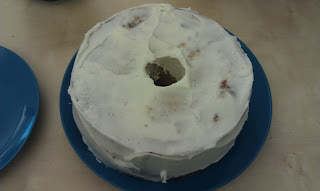or
Fat people are trying to kill off people that exercise.
We are now steadily heading into Autumn. Depending on where you live (and if you exercise outdoors), this probably means you're starting to consider longer sleeves, tights, and other ways to stay comfortable. It also means you're much more likely to go for your run, walk, or bike ride after dark. So...why the heck is all the cooler weather outdoor gear that I can buy locally black or possibly dark blue or grey?The main problem is that dark colors, when worn after dark, simply make it very difficult for other people to see you. Unless the clothing designers think that we're all in cross-training to be ninjas, this makes no sense, or at least it makes no sense for the only options to be black, or dark grey.
It is even a problem if you're on a walking path. If you're wearing a dark colored jacket with dark colored pants, you have to worry about being run over by someone faster who can't see you in stealth mode.
Personally, I like the conspiracy theory that chubby people, possibly in cahoots with health clubs, design exercise gear, and are trying to kill off people that exercise outdoors in the winter. However, I cannot prove this, so let's just look at possible solutions.
Buy other clothes
Perhaps the simplest of solutions, buy clothes from a manufacturer (probably online) that understands that we're not all going for 'slimming' black. My personal favorite is Brooks. I particularly like their line of high visibility clothes.
Use a high-visiblity vest or jacket
Another simple solution. High visibility vests should be available at pretty much any sports store. There are also high visibility jackets and wind breakers from clothing lines that cater towards runners and bicyclists.
The main drawback of the high-visibility vest or jacket is that when it is reasonably warm, but still dark when you run, they can easily become uncomfortable.
Carry a flashlight
Perhaps the cheapest solution. A water resistant LED flashlight should cost $3-5 and can be used both to illuminate your path and to indicate your presence to other humans.
An important point of etiquette though: don't shine it in other people's faces.
A combination of the above
The best option is probably a mix of the above. I tend to wear a high visibility windbreaker to make myself visible to cars, but also carry a flashlight to indicate my presence to the other walkers and runners in the park.


























